16th Oct 2017: NATO Ships Hold Missile Defence Drills Off the Coast of Scotland
Warships from eight NATO countries participated in live-fire self-defence exercises of ship and missile systems near Scotland on Sunday.
Ships from Canada, France, Germany, Italy, the Netherlands, Spain, the United Kingdom and the United States conducted a live fire defence of the Northern shield of NATO against medium-range and anti-ship cruise missiles.
The USS Donald Cook successfully intercepted a medium-range missile with a Standard Missile-3 Block IB guided missile during the exercise, the Pentagon said.
Three anti-ship cruise missiles were fired upon by Spanish and Dutch ships participating in the ‘Formidable Shield’ exercises in the U.K. Ministry of Defence Hebrides Range located on the Western Isles of Scotland.
The U.S. Department of Defence said this was the first time NATO’s ‘smart defence’ concept was demonstrated with some ships providing protection to other vessels targeting ballistic missiles. (Novinite)
 St Kilda
St Kilda Cape Wrath Bombing ranges
Cape Wrath Bombing ranges
Scotland – Beautiful above – but deadly below and at sea
The Westminster government handed the USA large areas of Scotland’s mainland, islands and maritime areas forming part of a long term lease lend scheme ensuring the UK would be provided with nuclear weapons at an advantageous price.
Weapons currently include the Trident and around 200 nuclear warheads.
Successive Westminster governments routinely claim the weapons systems provide the UK with an independent nuclear deterrent but this is not the case since all systems fall under the control of the USA at all times and as such their use could never be authorised by a UK Prime minister.
The fore-going begs the question, why the hell do we have them?
It is fact that the US navy has been forbidden for a number of years from using high intensity sonar in US maritime areas because such use brings death and destruction to many of the oceans mammals who totally rely on their own form of sonar to communicate and organise their pods of youngsters and older members.
The Westminster government tolerates no such interference in Royal Navy operations or training.
So it’s a case of “come on over twice a year boy’s to the Yanks and many other NATO naval forces”.
Joint operations involve the use of high frequency sonar, 1000 kilo bombs.
Carpet depth charging and bombing of large areas of the sea-floor and use of missiles.
The sea floor around the West coast of Scotland is a very large midden chock -a-block full of nasty debris, left overs from over 100 years of continuous abuse by the navies of the world at the invitation of Westminster.
18 April 2008: Stranded Whales – Navy denies Use of Sonar Cause of Problem
The Royal Navy has denied sonar noise from warships caused whales to strand themselves on beaches.
The service was responding to concerns from the Whale and Dolphin Conservation Society (WDCS) ahead of the start of a major military exercise.
Society officials said 43 marine mammals have died since February.
Joint Warrior, to be staged off the west coast of Scotland, involved 36 warships and about 70 aircraft from the UK and 16 NATO countries.
The Royal Navy assault ship, HMS Bulwark, Type 23 frigates, mine-hunters, two submarines and Royal Marines took part.
Live firings at ranges and simulated bombing runs against island airports were amongst the activities.
The Whale and Dolphin Conservation Society (WDCS) said there have been stranding of Cuvier’s, pilot and Sowerby’s beaked whales.
The Hebridean Whale and Dolphin Trust submitted a Freedom of Information request to the Ministry of Defence (MoD) to find out whether the first stranding of Cuvier’s off the islands of Islay, Tiree and Harris coincided with the use of military sonar.
A spokesman of WDCS, said: “So far, we have received a less than satisfactory response from the MoD, which indicates that sonar-related whale deaths are not being taken seriously and does not ease our suspicions that these events were indeed associated with naval activities.”
The Royal Navy told BBC Scotland that no whale stranding had been attributed to its use of sonar.
No vessels were in the area using sonar at time of the February stranding, a spokesman added.
The navy said it could not dispute sonar noise had an impact, but the service regarded itself as a world leader in using it responsibly.
Low frequency active sonar – the loudest used by the Royal Navy – will not be used outside of war-time when marine mammals were close by, the spokesman said.
He said specialists on board submarines can detect whales and dolphins using highly sensitive hydrophones.
Held twice a year, the Royal Navy and Royal Air Force-run exercise involve the US, France, Germany, Denmark, Netherlands, New Zealand, Canada, Latvia, Poland, Spain, Belgium, Norway, Italy, Turkey, Portugal and Norway.
http://news.bbc.co.uk/1/mobile/scotland/highlands_and_islands/7354852.stm
28 October 2010: Experts monitor South Uist whales
Animal welfare experts visited South Uist to monitor the activities of a pod of pilot whales which had swum into Loch Carnan, a sea loch on the island. There were fears that the whales were about to beach themselves.
The area coastguard said the group of about 25 whales was still swimming in relatively deep water and had shown no signs of distress. They were last spotted near a small pier in Loch Carnan.
Officers from the Scottish SPCA and experts from the British Divers Marine Life Rescue group are on South Uist to monitor the animals.
http://www.bbc.co.uk/news/mobile/uk-scotland-highlands-islands-11643819
29 October 2010: In pictures: Whales off course in Uist loch.
http://www.bbc.co.uk/news/uk-scotland-11654151
29 October 2010: Threat of mass whale stranding in South Uist remains
A group of whales in danger of becoming stranded off the coast of South Uist continue to be monitored.
The Scottish SPCA said the 24-strong pod of pilot whales are currently swimming freely in the bay at Loch Carnan, but the threat of stranding remains present.
The Scottish SPCA and British Divers Marine Life Rescue (BDMLR) launched a rescue operation after members of the public had seen the animals close to shore.
Two teams of volunteers, including 10 medics and three inspectors from the Scottish SPCA, travelled from the mainland to the site, taking three vehicles, two rescue trailers and four sets of rescue pontoons.
The rescuers have also enlisted the help of Project Jonah, the New Zealand-based marine mammal rescue organisation which has experience in mass whale stranding and will be providing advice over the phone should a stranding occur.
A Scottish SPCA senior inspector said “After treacherous weather conditions overnight, we are relieved to report that although the pod of whales are still in the bay, they are swimming freely and have not yet stranded.
There are several juveniles in this group and they all seem to be quite happy at the moment.
We are privileged to see these animals up close, but we are also very aware that the threat of stranding remains, which would, of course, be disastrous.
We will continue to monitor the whales throughout the day, ready to act should the danger of stranding become a reality.”
http://www.bbc.co.uk/news/uk-scotland-highlands-islands-11652688
30 October 2010: South Uist whales ‘now safe’ at sea
Animal rescuers believe a pod of whales which were in danger of becoming stranded in a sea loch off the coast of South Uist are now safely at sea.
The Scottish SPCA and British Divers Marine Life Rescue (BDMLR) had been monitoring the whales since they were spotted at Loch Carnan on Wednesday.
The coastguard reported no sign of the 24-strong pod on Saturday morning.
There were concerns the whales were in distress but experts said the behaviour was typical of adults protecting young.
A Scottish SPCA senior inspector said: “The coastguard has been out this morning and there was no sign of the whales, which is very good news.
There was a real fear of mass stranding and, while there is no guarantee they won’t return, we are hopeful the whales are now safe at sea and will stay there.
It may be that the juveniles in the pod were sick or too young for the rough seas and the adults kept them close to the shore for safety.”
http://www.bbc.co.uk/news/mobile/uk-scotland-highlands-islands-11659010
7 November 2010: Whales found dead on Donegal beach
Scientists have taken skin and tissue samples from 33 pilot whales which died off the coast of County Donegal.
Environmentalists are trying to establish how the whales beached on Rutland Island near Burton-port.
It’s thought they were the same group spotted in the Outer Hebrides at the end of October.
An expert from the Irish Whale and Dolphin Group said it was one of the biggest mass deaths of whales in Irish history.
He expressed concern that Royal Navy sonar equipment could have played a role adding that the Royal Navy had been exercising in the area off South Uist at the time but had moved away.
He said “Thirty or 40 pilot whales were spotted off the Outer Hebrides at South Uist last week.
It looked like they were going to strand. It was bad weather. They were not seen again. They’re a very strong and social group… so the sick and the healthy died here together.”
Campaigners are concerned that the latest very high frequency sonar equipment used routinely by the Royal Navy could have disturbed the navigational skills of this deep diving species of whales.
But a spokeswoman from the Royal Navy said that when the whales were spotted near South Uist, the closest navy ship was 50 miles away.
At that distance, she said, there was no way that the sonar equipment could have affected them.
But the pod had been spotted near Uist, between 24-36 hours following exposure to very high frequency sonar and at that time the Royal Navy and the Whales were very closely located.
Previously, the Royal Navy has denied that sonar noise from their warships could cause whales to beach.
However, in America, the US Navy was ordered not to use mid-frequency sonar during training exercises from 2007 and 2009, after a judge found in favour of campaigners who argued the devices harmed marine mammals in the area.
A team from Galway, Mayo, Institute of Technology travelled to the scene off Donegal to take samples from the mammals.
Skin samples were also be sent to the Irish Cetacean Genetic Tissue Bank at the Natural History Museum in Dublin.
Sixty whales died in the 1960s off the west coast of Kerry and 35 to 40 animals died in north Kerry in 2001.
http://www.bbc.co.uk/news/uk-northern-ireland-11705622
20 May 2011: Fear for mass stranding of whales on South Uist
Marine animal experts are preparing for a potential mass stranding of more than 60 pilot whales in South Uist in the Western Isles.
The whales were spotted in Loch Carnan on Thursday afternoon and about 20 were said to have cuts to their heads.
It is thought the injuries may have been caused by the whales’ attempts to strand themselves on the rocky foreshore of the sea loch.
However, animal welfare experts think they may not be in imminent danger.
A spokesman for the British Divers Marine Life Rescue (BDMLR), at the scene, said “low tide has come and gone and the whales have remained out at sea.
They are not in imminent danger of stranding. We are just keeping an eye on them and see what they do next.
We are trying to make sure they don’t become distressed. Rather than try to stop them coming ashore, we would let them come ashore and then try to deal with that situation when it arose.
We have got several sets of pontoons with us, which is our whale re floatation equipment, and we have got more on the way.
We have currently got 12 sets congregating on the Uists, which is basically every set in the UK. We are going to let them play out whatever role they want to do and take it as it comes.”
The pod had been moving back and forth from the shore and rescuers said the animals were “very vocal”, which may be a sign of distress.
The whales, a deep water species, have moved from the loch back to a nearby bay, where they were first spotted.
In October 2010 a pod of pilot whales were in danger in the same sea loch. Days later, 33 whales, thought to be the same group, were discovered dead on a beach in County Donegal.
The Scottish SPCA, said: “It is incredible that a second pod, this time probably more than twice the size of the one previous, has arrived in the same area.
There is no reason we know of why they would have come to the same location.”
http://www.bbc.co.uk/news/uk-scotland-13466462
20 May 2011: In pictures: At risk South Uist pilot whales.
http://www.bbc.co.uk/news/uk-scotland-highlands-islands-13469173
21 May 2011: Whales at risk of beaching on South Uist leave loch Carnan
A pod of more than 60 whales at risk of beaching in the Western Isles are leaving the area and attempting to swim south.
Marine experts said the whales had moved from Loch Carnan, South Uist, but were “hugging” the coastline.
The pod was first spotted on Thursday afternoon and it was feared they could die in a mass stranding.
The Scottish government has sent marine protection vessel Hirta to shadow the pod’s movements.
A spokesman said the use of acoustic devices would be avoided.
Weather conditions were poor with high winds, rough seas and moderate visibility due to low cloud and rain.
A spokesman for the British Divers Marine Life Rescue (BDMLR), said: “Medics on the scene at Loch Carnan, South Uist, are reporting that the pod of pilot whales has now moved from the location they were in earlier and appear to be endeavouring to leave and head south, but hugging the coastline.
The remainder of the coastline is predominantly rocky with numerous inlets and bays which give a separate set of dangers to the creatures.”
Volunteers are keeping watch for the whales around these dangerous areas.
http://www.bbc.co.uk/news/mobile/uk-scotland-highlands-islands-13483100
23 May 2011: Two whales found dead in Loch Carnan
A second pilot whale has been found dead in a Hebridean loch after experts feared more than 60 of the animals had been at risk of becoming beached.
The pod had left the shallow waters of Loch Carnan in South Uist on Saturday, but returned later that night.
They have now headed out of the area – but an animal welfare charity confirmed another whale’s body had been found.
Tests on a body found earlier suggested the female died from disease, not because it was stranded on rocks.
Marine experts said the rest of the pod had now had left the area but those involved would continue to monitor the Pod’s progress south.
http://www.bbc.co.uk/news/uk-scotland-highlands-islands-13496653
22 July 2011: Fifteen pilot whales in trouble in Kyle of Durness
Two whales have come ashore and up to 15 others were in difficulty in shallow water at Kyle of Durness, on the north Highland coast.
The Maritime and Coastguard Agency (MCA) said the whales were believed to be from a pod of as many as 60.
A Royal Navy bomb disposal team training in the area has offered its help in any rescue effort.
Highland Council countryside rangers and coastguard volunteers have been monitoring the situation.
A (WDCS) field officer, said the area was remote and it would take rescuers sometime to reach the scene. He said: “It is going to be tricky.It is a remote and difficult place to get to.
The latest report is that two of the whales were stranded on the shore, 15 were in shallow water and at significant risk of becoming stranded and at least another 20 whales appeared to be heading towards the shallows. Whales failing to make it back out to sea do not survive.
Post mortem examinations will then be completed with the aim of identifying what caused them to come ashore. This enables the Stranding Scheme to monitor trends in causes of marine stranding which in turn allows identification of any new or developing hazards to marine mammals in Scottish waters.”
23 July 2011: Volunteers monitor coast for fresh whale beaching
Rescuers who guided 44 pilot whales out of shallow waters are monitoring a remote Highlands coastline to make sure they do not become stranded again.
Medics from British Divers Marine Life Rescue, the coastguard and the Navy were called to the Kyle of Durness after the pod of more than 60 was spotted.
Forty-four were encouraged back to sea but 25 did not survive.
Rescuers said that three whales still alive would be euthanased as their condition was not good for refloating.
Post mortems examinations will be carried out out on bodies on the shore to find out the cause of the stranding and the deaths of the whales.
The team of helpers managed to rotate whales that were upside down to prevent them from drowning when the tide came in.
Medics from as far as Newcastle responded to the incident and nine sets of pontoons were delivered to the site overnight.
Although they were not used because the estuary flooded too quickly, they will remain on the site in case they are needed.
A number of volunteers are currently searching the coast, lochs and headlands for evidence of the whales which had returned to open water.
http://www.bbc.co.uk/news/uk-scotland-highlands-islands-14260666
25 July 2011: Whales stranded in Sutherland ‘seemed healthy’
Experts examining the carcasses of 25 dead pilot whales say they were apparently healthy animals before getting stranded on a Sutherland beach.
They were part of a pod of 60 whales which got into difficulty in Balnakiel Bay and the Kyle of Durness. Rescuers managed to help most to deeper water.
Scientists have now taken samples from the dead whales to try to establish why they beached. One of the team told the BBC that the animals showed no obvious injuries.
However, she added that more detailed analysis was needed before they could speculate on why they came ashore.
About 25 of the 60 whales which got into trouble did not survive, and post-mortem examinations are being carried out out to establish the cause of the stranding and the deaths of the whales.
http://www.bbc.co.uk/news/uk-scotland-highlands-islands-14276042
April 2015: UK Cetacean Stranding Investigation Programme (2011-2014)
Mission: To provide a coordinated approach to the surveillance of cetacean stranding and to investigate major causes of death of stranded cetaceans in the UK.
The project will also collect data on UK stranded seals, marine turtles and basking sharks.
The outputs form this project include the ability to determine the causes of death in cetaceans and using stranding events to monitor the incidence of disease to identify any substantial new threats to conservation status, will ensure that the UK complies with a number of national and international agreements, obligations, including the habitats directive and the Agreement on the Conservation of Small Cetaceans in the Baltic and North Sea (ASCOBANS). Objective parameters:
* Collate, analyse and report data for all cetacean stranding around the coast of the UK.
* Determine the major causes of death in stranded cetaceans, including by-catch and physical trauma, in order to identify any substantial new threats to their conservation.
* Undertake surveillance on the incidence of disease in stranded cetaceans in order to identify any substantial new threats to their conservation status.
* Investigate any interaction between feeding behaviour, fisheries and stranded cetaceans through examination of the contents of the stomach, recording any evidence of ‘litter’.
* Maintain a database bringing together accurate and geo-reference data on both stranding and post mortem data, allowing end users to interrogate such data using the Internet.
* Make information on stranding and post-mortems results available departmental quarterly and publicly available by annual reports.
April 2015: Today it was revealed that the deaths of a large number (at least 19) of long finned Pilot Whales near the range in 2011 was caused by military activity (the disposal of ordnance on the sea bed) at the military range.
The reference contained the assessment of the sequence of events that led to a significant loss of marine life.
With characteristic understatement the marine scientists employed by DEFRA to draw up the report suggested how such events could be avoided henceforth by adopting the following measures in ‘mitigation’:
1). Consider deployment of acoustic monitoring equipment in the waters around Garvie Island to properly characterise the extent and magnitude of the detonation blast profile.
Systems for real time monitoring are available and this is probably more effective in the long term and more reliable in poor weather.
2). Consider deployment of passive acoustic monitoring equipment as a tool to assess the presence of ecolocating odontocetes in the critical area.
3). Train and use marine mammal observers to be stationed on appropriate vantage points to scan for cetaceans along a section of coastline either side of Garvie Island and develop systems for relaying this information to central control.
4). Improve communication systems between members of the disposal team and shore based observers.
5). Avoid serial detonations in a small time window.
6). Whenever possible, the type of charge used to deactivate devices should be one which burns out rather than explodes the target (a technique routinely used in some parts of the world.)
Burn out systems enjoy a good success rate with no significant extra cost in terms of time, resources or diver safety.
Given the potential damage to marine life from the ‘high order’ explosions of conventional disposal techniques, it is questionable why this method has not been used routinely in the past.
20 June 2015: SNP criticise undersea detonations after whale deaths
The SNP has called for an end to explosives being detonated in the sea around Scotland following a report into the deaths of 19 whales in 2011.
The Department of Environment, Food and Rural Affairs (Defra) study suggested military activity may have harmed the long finned pilot whales.
The 19 were among 39 that stranded at Kyle of Durness a day after three explosions at nearby Cape Wrath.
The Ministry of Defence (MoD) said it accepted the report’s findings.
Seventy distressed whales were spotted in the shallow waters of the Kyle of Durness on 22 July 2011.
Despite attempts by rescuers to coax them back out to sea, 39 were left stranded by the tide.
Defra’s report into the incident said that three 1,000lb (454kg) explosives were exploded underwater at the nearby Cape Wrath military firing range the day before the stranding, while there was another blast shortly after the animals got into difficulty.
The report said it would be reasonable to conclude that these underwater detonations may have had a significant effect on the behaviour hearing and navigational abilities of the animals.
Rob Gibson, SNP MSP for Caithness, Sutherland and Ross, said: “This report confirms what we already suspected but the Ministry of Defence tried to cover up – the detonating of bombs led to the whales being deafened, forced off course and dying on the beach at Kyle of Durness.
The efforts of the local people in the Kyle of Durness to save the beached whales were incredible – but sadly the animals could not be saved and many died.
Scotland’s seas are blessed with many marine mammals, including more than 20 species of whales, dolphins and porpoises.
It is our responsibility, where possible, to do all we can to protect these wonderful and popular species.”
He also criticised the length of time it had taken for the report to be published.
A spokesman for the MoD said: “The MoD accepts the findings of the Durness Mass Stranding report which identified a number of possible factors that may have influenced events, one of which was the detonation of underwater explosives. ”
The recommendations will be considered by the MoD and implemented where appropriate.
Additional mitigation has already been put in place during munitions disposal activities conducted since 2011.”
http://www.bbc.co.uk/news/uk-scotland-highlands-islands-33268200
11 April 2015: NATO ships arrive in Scotland for massive joint exercises
The exercises entail deployment of substantial NATO maritime resources, although the UK itself lacks maritime patrol vessels for North Sea security.
A recent report by the European Leadership Foundation also found that many NATO members were cutting overall military spending.
The Royal United Services Institute estimated that the UK is set for even deeper cuts to military budgets, and will reallocate ‘war pensions’ into military spending to meet NATO targets.
Not withstanding financial difficulties NATO’s Standing Naval Forces arrived in Scotland for the largest-ever Joint Warrior Drill, which included 50 ships, 70 aircraft and 13,000 personnel from 14 countries.
Joint Warrior is held twice a year – in April and October. Naval and aerial activities are concentrated off the coast of Scotland, including amphibious landings. The exercises have been going on for a long time.
In total nearly 12,000 military personnel are involved giving it a powerful level of robustness.
Many nations participate, including: The US, The Netherlands, Canada, France, Denmark, Belgium, Norway, Poland, Sweden, Germany and others.
Captain Gennaro Carola, Standing NATO Maritime Group Two’s (SNMG2) Chief of Staff said: ” This exercise provides opportunity for us to work with our Allied shipmates.
Lieutenant Commander Matthew Hamm, USS Vicksburg’s operations officer said: “for most US Sailors, our training and qualifications are done with other US Navy.
Ships; multinational exercises like this help our sailors learn how to cooperate and excel with other navies in a challenging and multidimensional environment.
The aim of the exercises is to provide complex and coordinated training between military forces from various countries and to integrate land and maritime forces.
They will also have an anti-terrorist dimension. Joint Warrior is a very good opportunity to showcase the interoperability skills we as an Alliance maritime force are always perfecting.
With this exercise we have a chance to work together on a large scale and to implement all of the lessons learned from our previous exercises. It will be an exciting and busy time at sea,”
Many of the aircraft involved will fly from RAF Lossiemouth in Moray and Prestwick airport, a pseudo civilian airport with an extra long runway to the South of Glasgow in Ayrshire
Plane spotters are apparently already flocking to Prestwick, according to local media, while local residents in the Northwest of Scotland have been warned that they might be disturbed by low flying helicopters.
A government spokesman said: “Prestwick stands ready to play its part in Joint Warrior and our involvement shows we have the expertise, capability and resources to routinely host Europe’s largest military exercise.
We look forward to hosting numerous aircraft including various fast jets, helicopters and transport aircraft such as Hawks, Falcon 20s, A340s and C130s, from the RAF and the Royal Navy as well as those from many other NATO countries including France, Belgium and Holland.”
Prestwick’s Chief Executive Iain Cochrane said.
“Many of the ships involved have already started arriving at the Faslane naval base on the Clyde to the west of Glasgow.
The Royal Navy has said that jamming will be limited to an area in the Northwest of Scotland and the Mountaineering Council of Scotland has warned hikers that there may be disruption to GPS devises and to take a map and compass as well.
The last time Joint Warrior took place in Scotland in 2011 jamming was suspended after complaints by fishermen in the Western Isles.
The war games come just weeks after a Scottish fishermen, Angus Macleod, said the nets of his trawler were snagged by a submarine resulting in his nets being dragged continually in front of his boat.
Such encounters can be dangerous for fishermen and he said he and his four crew were “extremely lucky”.
http://rt.com/uk/248921-nato-scotland-joint-excercises/
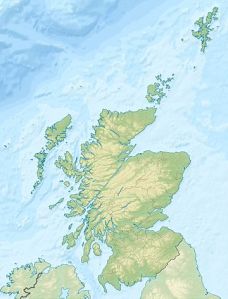
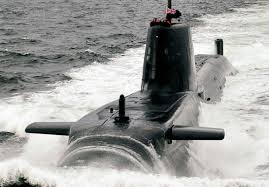
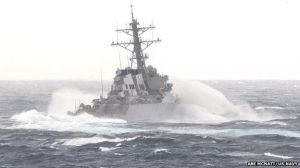
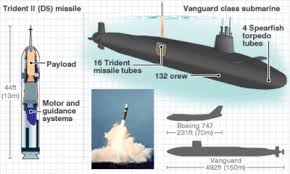
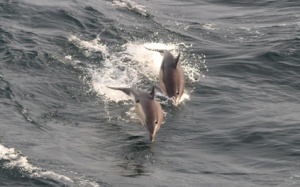
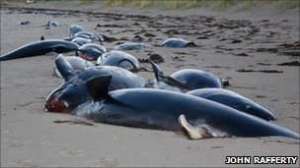
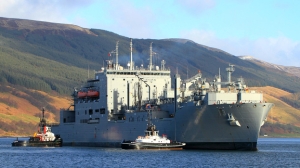


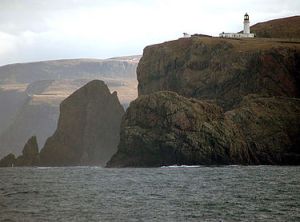
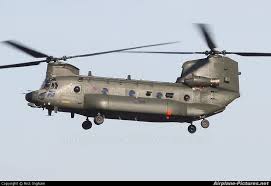

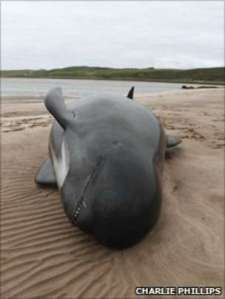
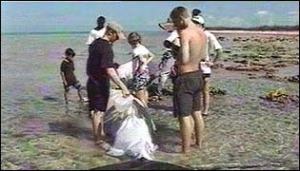
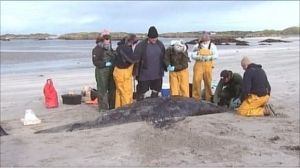
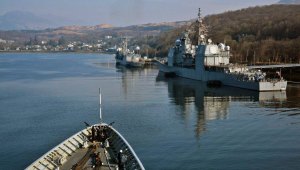


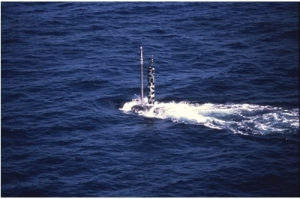
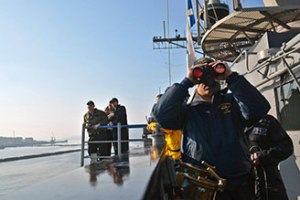


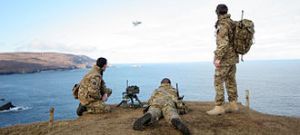
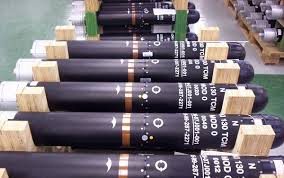


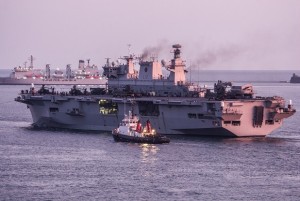


Leave a comment